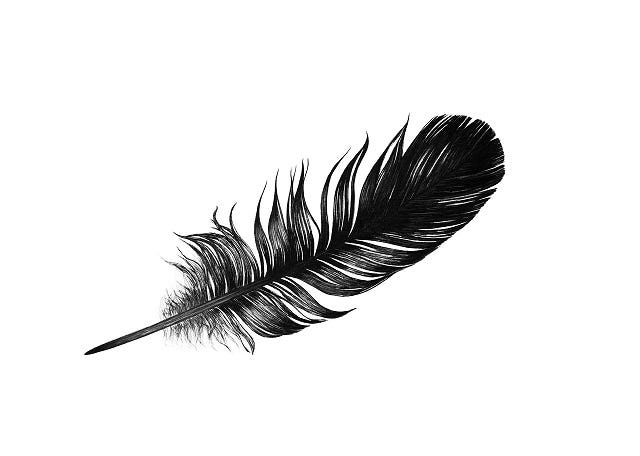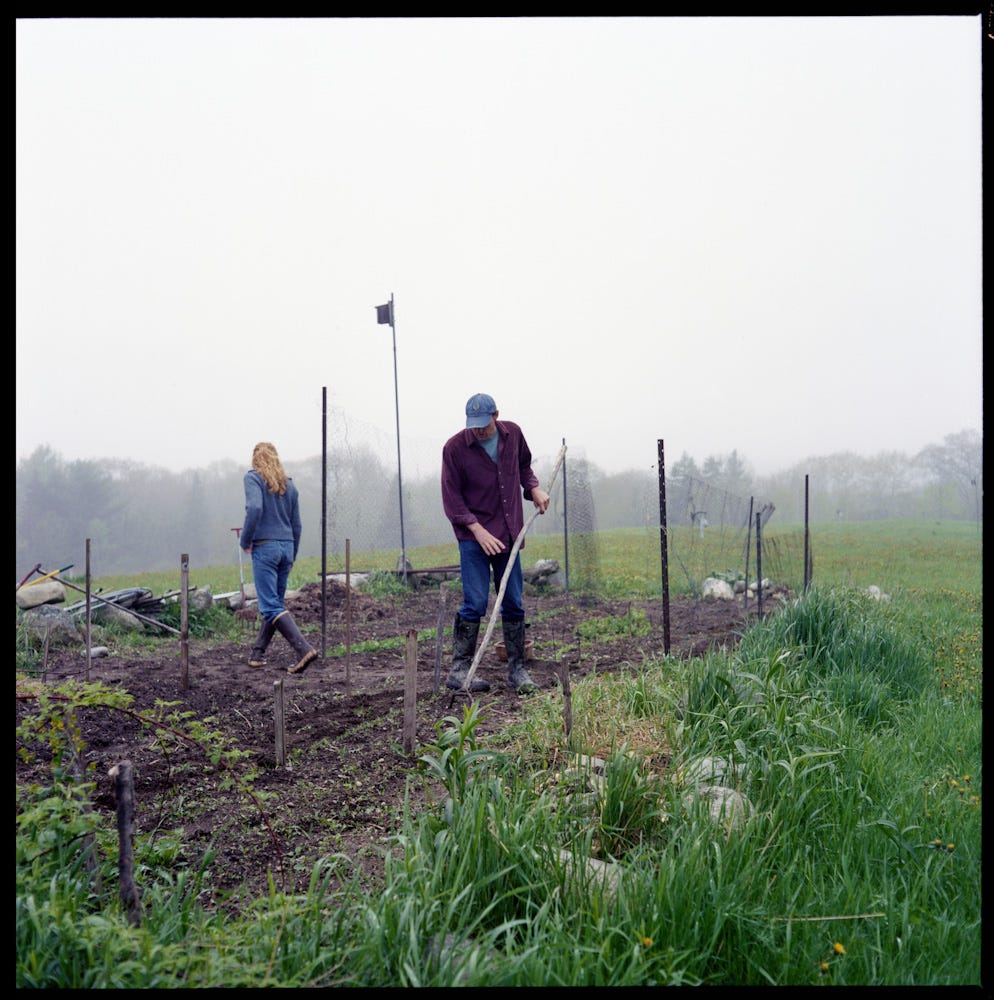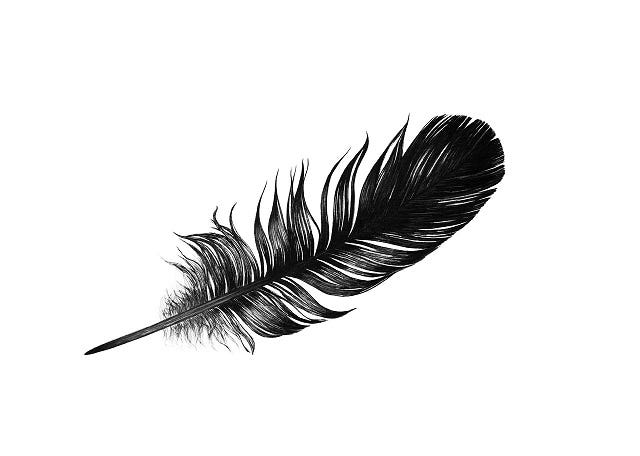
Hello everyone:
As always, please remember to scroll past the end of the essay to read some curated Anthropocene news.
Now on to this week’s writing:
Heather, my mother, and I flew from Maine to BWI on Saturday, leaving just as the tropical remnant of Hurricane Lee sideswiped the region. In an interesting demonstration of the difficulty of hazard risk assessment, half of the flights out of Portland had been cancelled the night before while the other half, having stuck it out, departed on time from a dry tarmac into mildly gusty winds.
To be fair, sometimes it’s hard to know what to do, even when you can see the hazard coming straight toward you.
We were lucky. Lee’s track northward waffled a bit, and Portland could have been hit much harder. Eastern Maine and the Canadian Maritimes received up to six inches of rain and 60-70 mph wind gusts. In Portland, we were on the western edge of the swirling tropical system, with very different weather on either side of us.
Hopping on a flight at the start of Climate Week, just as the tens of thousands of good activists behind the End Fossil Fuels marches and bank blockades were gearing up, felt like a moral failing. But my wonderful nephew was getting married, and family was gathering for the event, so I had made my peace with the decision months ago.
Still, I couldn’t help wincing a bit at the wedding whenever I heard myself saying I wouldn’t miss it for the world to people who were impressed that we’d come all the way from Maine and flown out of a hurricane. It’s a phrase that for me seems a bit too on-the-nose, since we’ve finally reached the point in this industrial cultural experiment in which the world – now an unwieldy assemblage of human and natural landscapes – is unsafe for millions of species.
That said, I’m not an environmental absolutist. I’m deeply aware that the flawed world that’s been constructed for us has no exits or easy solutions. As a subscriber recently reminded me (Thank you, Bill) our choices are trade-offs rather than solutions. Solutions are what you get when you have time to plan; trade-offs are the result when you don’t. How we handle the climate and biodiversity crises now, decades after we should have reimagined civilization, is all about trade-offs. But for eight billion people, increasing by 80 million per year, those trade-offs can do so much harm that they scarcely seem like solutions at all.
For Heather and me, as for you, I imagine, the daily environmental choices are a matter of pragmatism and respect, a matter of rebuilding some kind of right relationship with the living world. The onus to do so should mostly be on the policy makers and on the big players in the economy who make and sell the stuff clogging up a clogged-up world, but I’m still willing to play my part in the too-slow evolution toward a circular economy. Heather and I produce only a modicum of trash, recycle whatever we can recycle, grow a bit of our own food, keep purchases and carbon-heavy travel to a minimum, etc., all while living a life that’s cheerfully attentive to the plants and animals around us. We still drive around and buy some plastic stuff, because it’s nearly impossible not to. We live a quiet life, not a sacrificial one
.Up in the fuselage, as always, the view of life below was both expansive and narrow, exhilarating and depressing. Expansive and exhilarating because we rocketed up through the fringes of the tropical storm into a sky that offered an Olympian view across the vast “rubble of clouds,” as Helen MacDonald put it so beautifully in the title essay of Vesper Flights. Narrow and depressing because, really, we were pressing our noses to a tiny plastic window (stretched acrylic, in fact) to look down at the built world squatting atop the community of life.
What is a window? It’s a hole in our constructed world through which we see a small portion of the real one. It’s an eye that neither blinks nor pays attention. It’s a metaphor for our interior lives. (Note how many passengers, myself included, spend more time looking at a book or screen than the view.) And, perhaps a billion times per year, it’s a killer of the magnificent creatures who inhabit and traverse the air between the Earth and our toxic machine.
It's migration season, as BirdCast displays so beautifully, and as Bryan Pfeiffer reminds us so powerfully, noting that
The birds and the rest of us — we all move or stumble onward through life with no guarantees of safety. A Broad-winged Hawk might migrate thousands of miles this autumn or next spring only to find its usual forest destination on fire or gone altogether. It would be like passengers on a transcontinental flight discovering before landing that their airport was now a shopping mall or an oil refinery or a clear-cut.
If I had a 20- or 30-year time-lapse video from 10,000 feet above the suburb-filled lands we call Maryland and Virginia, it might look like this video of E. coli evolving over hours to turn antibiotic-soaked agar into a thriving colony. The suburbs and malls have advanced astonishingly quickly through forest and farm, block by block and curlicue by curlicue, the homes and stores looking like leaves clinging to stems and branches of pavement. That growth has been as inexorable as it is brutal, bulldozing habitats and ecosystems into oblivion. We rarely see it that way, though, because we’re stuck within it, busy with our lives, only occasionally glancing out the tiny window of our ecological consciousness.
The word “fuselage” was coined a century ago to describe how the first airplane bodies resembled the shape of the tapered wooden spindles used to wind yarn. “Fuselage” is also a cousin to “fuse,” the gunpowder-laced wicks used to light explosives. It seems fitting that these flying tubes, full of humans trapped in a culture that has turned simple living into a planetary crisis, are a technological hybrid of an elegant wooden tool and the constant explosion of internal combustion.
Is that what a hawk sees when looking into those tiny plastic windows as we rocket by? Who knows, but we should be actively wondering what they think/feel about the splintered world below. Failing to do so is a moral failing, a lack of empathy that when multiplied by eight (or nine or ten) billion creates a world which imagines the pavement is more necessary than the marsh, our windows are more real than our eyes, and the plane is more important than the sky.
The sooner we begin to see the toxic built world from the perspective of other species – whether on the ground or from the sky – the sooner we can rebuild a world that supports life rather than siphons it up for our purposes.
As the great Robin Wall Kimmerer writes in Braiding Sweetgrass, “We are dreaming of a time when the land might give thanks for the people.” When asked how we might best begin to reconnect with the land, Kimmerer suggests planting a garden:
It’s good for the health of the earth and it’s good for the health of people. A garden is a nursery for nurturing connection, the soil for cultivation of practical reverence. And its power goes far beyond the garden gate – once you develop a relationship with a little patch of earth, it becomes a seed itself.
It’s hard to see that kind of relationship from a fuselage, even if we lean in hard with face pressed to the window. So perhaps the best view of the sky remains here on the ground, feet planted and hands dirty, where remnant birdsong and migratory odysseys still tie together the land we must learn to protect from the hazards of our strange world.
We see the hazards coming straight for us – all around us, in fact – and we still don’t seem to be able to articulate them to each other and respond to them clearly enough. Some of that is due to the merchants of doubt, like Exxon and its climate disinformation campaign, some from the ecologically indifferent economic incentives that structure our lives, and some of it is borne from the size of our windows. But so much beautiful work is being done everywhere, like the climate activists in NYC this week, Kimmerer and Macdonald’s writing, the Guardian’s environmental reporting, African Parks, turtle rescue, and all of you who remember to see the world from the perspective of other species.
What does life need to live? How can we help? That’s how we begin to manage risk and choose the least harmful trade-offs.
***
Speaking of failing to manage hazard risk properly… I have managed, finally, to get infected with the SARS-CoV-2 virus. Whether from the crowded flights and airports or at the wedding in MD, I’ll never know. I’d like to think it was the former, because then I don’t have to second-guess the wisdom of dancing with Heather for a couple hours amid the throng. As I write this, I’m wearing winter clothes to quiet the fever chills, and finding it hard to string together these sentences. It’s been a crazy 48 hours. I’ll cap this essay here, then, hope it makes some sense, and go to bed much earlier than my usual wee hour bedtime.
I’ll be back next week, I hope, with one of my usual essays. I look forward to it. In fact, I wouldn’t miss it for the world.
Thanks for sticking with me.
In other Anthropocene news:
I’ve highlighted the Guardian here repeatedly, but I want to say again that they publish an incredible amount of top-notch environmental reporting every day, and I highly recommend you consider subscribing or donating to them. Their coverage is comprehensive across climate, energy, fossil fuel shenanigans, pollution, biodiversity (their Age of Extinction section especially), environmental justice, oceans, and more. Here’s a sample of some recent articles:
In cold weather, heat pumps are actually twice as efficient as fossil-fueled heat sources. Don’t believe the disinformation from the industries who are on the wrong side of history.
The “autobesity” trend that has made cars larger, heavier, and pricier is worsening road safety, pollution, and resource use. Supersized SUVs and trucks provide huge profits to manufacturers, but very few drivers actually need such bloated vehicles.
Antarctica is warming much faster than climate models had suggested, and the consequences for global sea level, oceanic currents, Southern Ocean ecosystems, and much more could be dire and arriving soon.
What dust can teach us about the world, whether it’s the history of hygiene, the subjugation of women in modern society, the health impacts of living near roads, the nature of precipitation, and much more.
Iceland is, for now, allowing commercial whaling to continue, despite halting it earlier this year because of a scientific report detailing the terrible suffering of the whales during the slaughter. There is reason to believe, though, that this is the dying gasp of the industry.
The continued widespread use of dynamite for fishing in Sri Lanka and elsewhere around the world is devastating fisheries and making it harder for traditional fishermen to feed their communities.
Fossil fuel companies are attempting to dismiss liability claims for climate change in Hawaii, even as communities in Maui struggle to recover from the terrible fires.
Likewise, private equity firms are unsurprisingly intent on profiting from investments in both fossil fuel development and climate disaster clean-ups.
An effort in NYC to save migratory birds, by turning off lights in buildings during migration.
A lovely photoessay on the first Inuit Protected Area being established in Nunatsiavut in northern Canada. It’s a coordinated effort by indigenous and Canadian authorities. The protected area, roughly 5800 square miles, will allow indigenous hunting and other uses but will be shielded from other development.






Get well quick, Jason. Take what measures you can to prevent Long Covid. It's the real danger.
This is so moving, and heartfelt. I love how you communicate the utter despair with all the hope and possibility mixed in, tho soft and subtle. I think your Covid brain may have stumbled upon some beautiful complexity. It’s ironic really. I’d to here your thoughts on how Covid-19 has played a part. I mean I’m thinking we have had a hand in creating this virus fueled world. Fuel...that word just popped in.